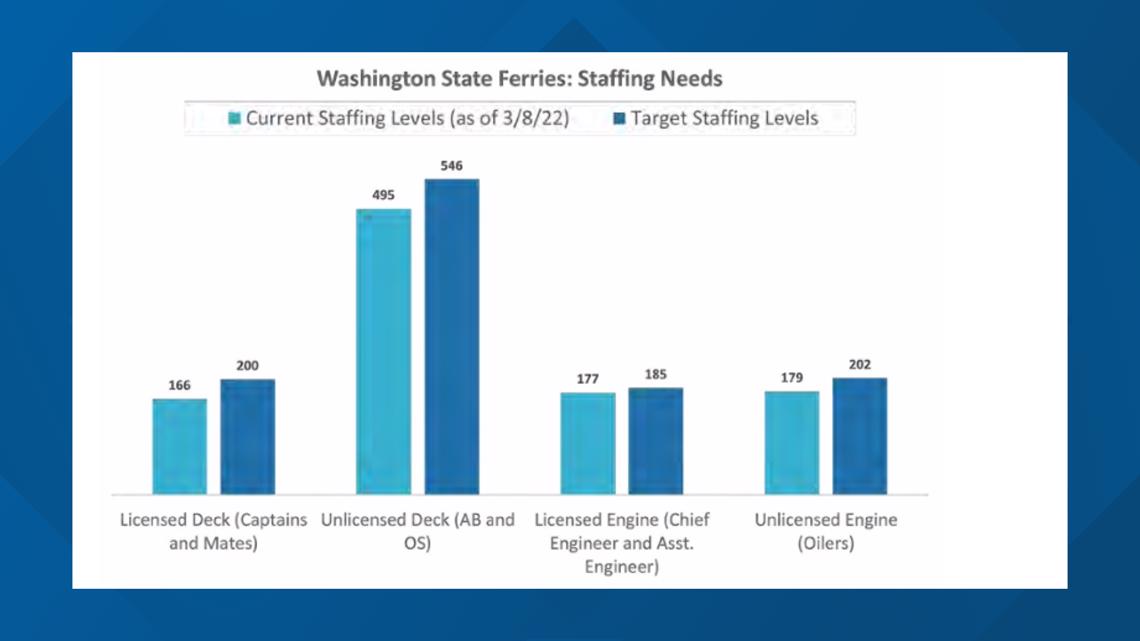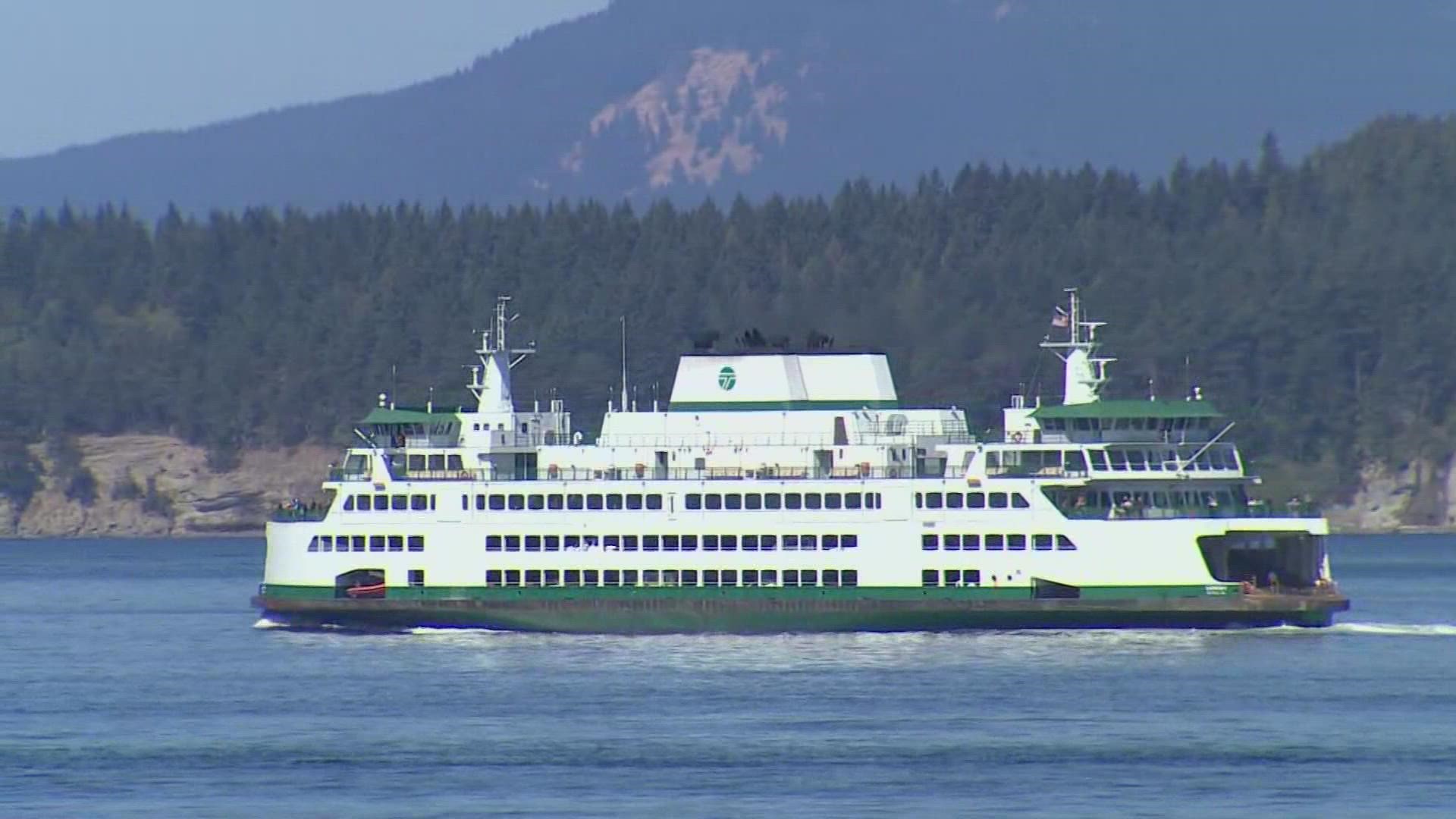SEATTLE — Editor's note: The above video on Washington State Ferries needing more workers originally aired April 11, 2022.
Starting Wednesday, Washington State Ferries (WSF) said most of its routes will operate on alternate schedules due to a mounting staff shortage that has worsened since the COVID-19 pandemic.
WSF said in a public bulletin the changes will lead to "more predictable and reliable service systemwide" for customers. The agency said it plans to notify people when full service can temporarily be restored to a particular route.
The following routes will have an alternate schedule on July 6:
While the following routes are running restored summer schedules:
WSF said the schedule page online shows the currently active schedules in the top section, though active schedules can change daily depending on crew availability. The Travel Alert Bulletins page will be updated with any changes.
The alternative service schedule means WSF has around 30% fewer sailings than its regular winter schedule.
Officials are prioritizing following ferry routes based on ridership, service performance, availability and vessel and crew availability in the event that they can restore full service. Anacortes/San Juan Islands was first on the priority list, while the Seattle/Bainbridge Island route was second.
WSF's COVID-19 Service Restoration Plan outlined the several challenges the agency faces in resuming fell service for its riders.
Once a route is operating on an alternate, reduced schedule it could move to "trial service," meaning the route will operate on its regular seasonal schedule on a trial basis. If the route can operate at a 95% reliability rate — how often they complete a scheduled route — for three weeks, WSF could restore "full service."
The agency's goal is to complete 99% of its scheduled sailings, but in 2021 it fell short with a 98.3% mark. From 2018 through 2020 - before the pandemic - WSF said its service reliability exceeded 99%.
In April, WSF officials acknowledged it is short-staffed and in need of dozens of new recruits.
"It's not good, quite honestly," said Ian Sterling, Washington State Ferry spokesman. "We don't have enough people to sail the vessels right now. We need to hire, train, and get people out on the water."
Sterling's admission came after months of delays, cancellations, and unstable service on the water, whether it be in the San Juans, Bremerton, or Vashon Island.


Sterling said COVID-19 vaccine mandates were also an issue in retaining crew members. About 200 WSF employees were unvaccinated on the deadline for state workers to be fully vaccinated against COVID-19 or risk losing their jobs. Some workers said they were granted religious exemptions but WSF could not accommodate them to keep them on staff.
"That was certainly one factor, but even going into the pandemic we knew we were going to be short of employees," Sterling said.
A March 8 report from the ferry system states staff shortages are "unprecedented" in the ferry system's 70-year history.


In 2021, Washington State Ferries operated approximately 22,000 fewer sailings than 2019 - roughly 72% of pre-pandemic ridership. In January, ridership slightly decreased compared to January 2021 levels, according to the March 8 report.
Meanwhile, vessel availability has recovered, according to the March 8 report. However, the report indicated availability remains at risk because of the aging fleet. The ferry system had 24 vessels five years ago but now has 21 active vessels in the fleet.
While stopping short of providing figures, Sterling said the Washington State Ferry system is competing with for-profit companies, particularly for engine room crews and that the system has hired "well over a hundred people in the last six months."
A lack of diversity, and age of the employees, were also cited as factors by Sterling and Dale Bateman, who runs the Academy in Ballard.
Bateman said a one-year program at the Academy costs about $10,000 and a graduate can make between $70,000-$80,000 a year to start.

